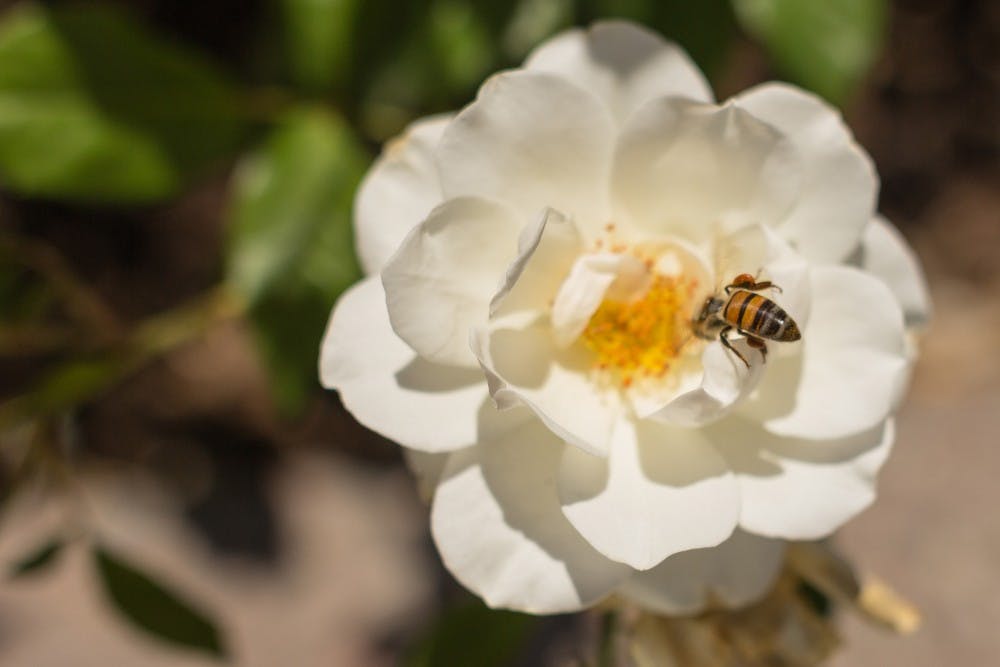With the arrival of spring, many students may have noticed a certain void on campus — the absence of the incessant bee alerts that plagued ASU email accounts last year.
In fact, ASU has limited the amount of alerts they send out this year to only include situations that pose serious health risks, associate director of facilities management Ellen Newell said.
Many students found the high frequency of bee alerts last year mildly annoying and, in some cases, comical. The alerts gave way to social media buzz, including the creation of an ASU bees Twitter account.
It was nice knowing you guys #asubees pic.twitter.com/PCwuydmpYA
— Trevor Rosenkilde (@TrevsTweets) April 1, 2015
Newell wrote in an email ASU tracks the bees on campus every year to keep an eye on the population size.
“We track bee calls in our time management system (TMA) through our service requests for bees," Newell wrote. "We track year to year so can tell if there is a large increase or decrease."
Newell also wrote that the bee numbers across all ASU campuses haven’t dwindled in comparison to last spring.
“There has been no decrease in the bee population as far as we know," Newell wrote in an email. "We have just as many bee calls this year as last.”
Newell wrote the bee alerts have decreased because they don't need to be sent if there isn’t a large safety issue.
“The police want to only send out alerts when there is a real health/safety risk," Newell wrote. "It has been decided the vast majority of bee calls do not warrant an alert."
Pest Control Crew Chief Zoltan Tresz works directly with the bees when there is a swarm issue on campus and, in some situations, even moves hives to other locations. He said he also hasn't noticed a sizable decrease in bees on campus.
“People think that there are less bees because there are less alerts now, but I think there are more bees this year than last year.” Tresz said.
Newell felt the importance of the alerts are lost if they are sent too frequently.
“I think they feel if students get too many alerts they may ignore them.” Newell said.
Industrial design sophomore Anna Lee was one of those students who didn't worry about the bee alerts last year.
“When I was first receiving the emails, I had imagined it to be a cute little swarm of like 50 bees near a bush, and I thought it was ridiculous that ASU would warn us about something that seemed natural," Lee said. "I think if the emails had said just how large the bee swarms were, it would have more impact.”
Related links:
Top 10 things to do now that bees have taken over ASU
The buzz about the bees is taking away from more important ASU advisories
Reach the reporter at sdave1@asu.edu or follow @simdave15 on Twitter.
Like The State Press on Facebook and follow @statepress on Twitter.




